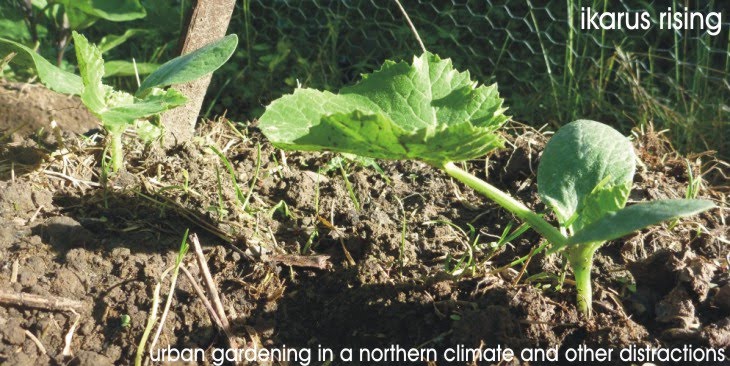I've been reading up on germination to learn the correct terminology for all the stages of development I've been seeing in the greenhouse. A seed consists of four main
parts: the seedcoat, the endosperm, the cotyledon(s), and the embryo. When a seed is exposed to heat and moisture, it begins to germinate. The first bit of green to break the surface is usually the
hypocotyl, and the pronounced bend that is typically seen is called the hypocotyl arch. With sufficient light, the hypocotyl will straighten itself, and the cotyledon(s) emerge. All the plants that I'm growing are dicots, meaning that they have two cotyledons. They look like leaves, but their job is to supply food to the developing plant until the primary leaves can take over. Eventually they turn yellow and fall off when they are no longer needed by the plant.
Cilantro germination:

First primary leaves slideshow (click to view larger and prettier in Picasa):
In younger seed news, the Garden Sage and Syriaca Zaatar Marjoram have sprouted in tray 2, and the Dukat Dill is just now starting to emerge, along with a single tarragon sprout. I'm starting to wonder about these tarragon seeds. Maybe it wasn't lack of heat in tray 1 that caused only three seeds to germinate.






The cotyledon seems quite large to me given the seed size. How does that all work?
ReplyDeleteThat cilantro day 31 photo is amazing, they grow up so fast! Also, nice camera!
I don't think that the cotyledon just unfold from inside the seed. I think that they start out tiny and then grow in response to light, warmth, and moisture just like leaves do. I'd like to find a book that discusses the details more, but have been unsuccessful so far. Maybe a botany textbook addresses some of these things?
ReplyDelete